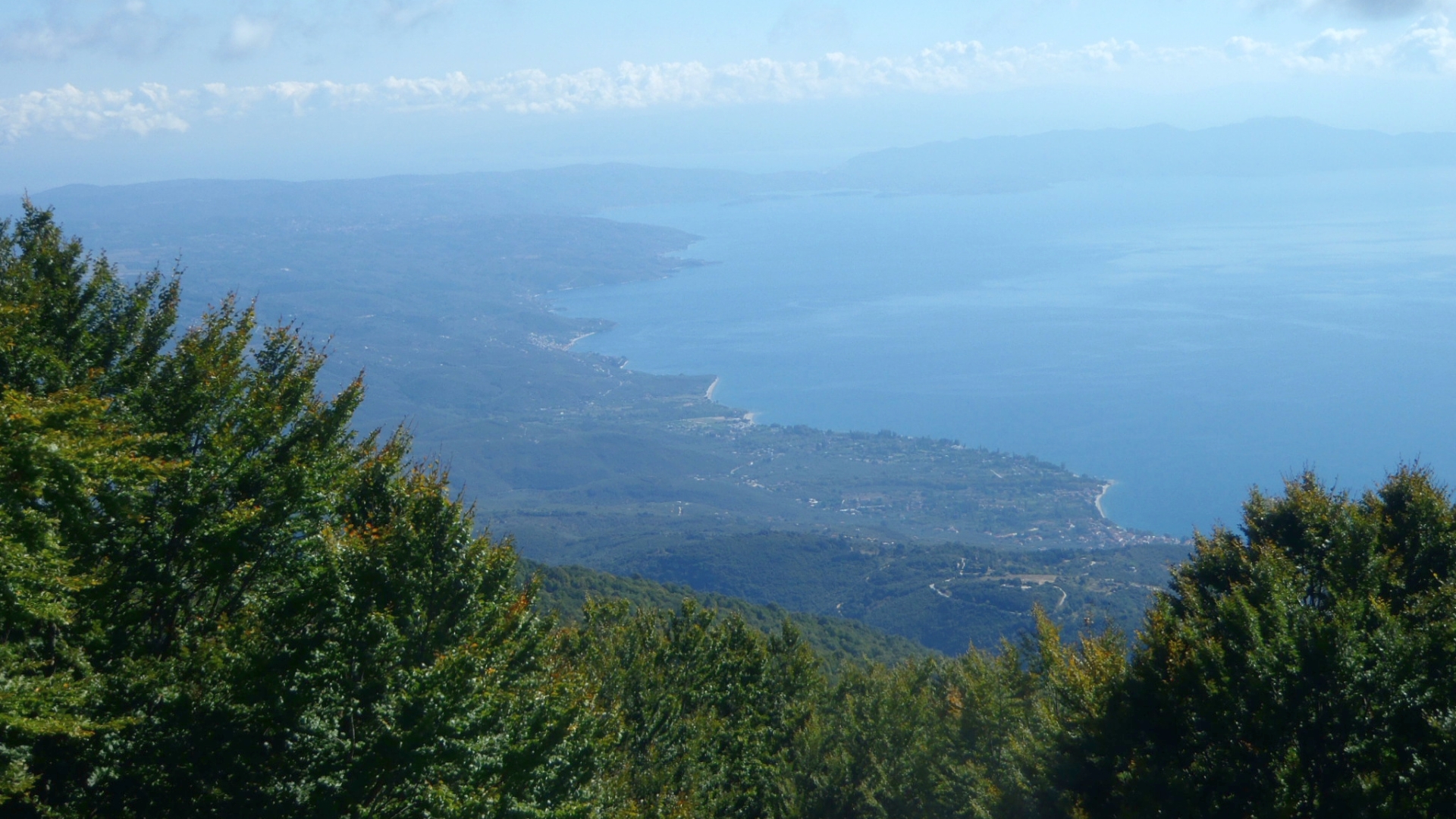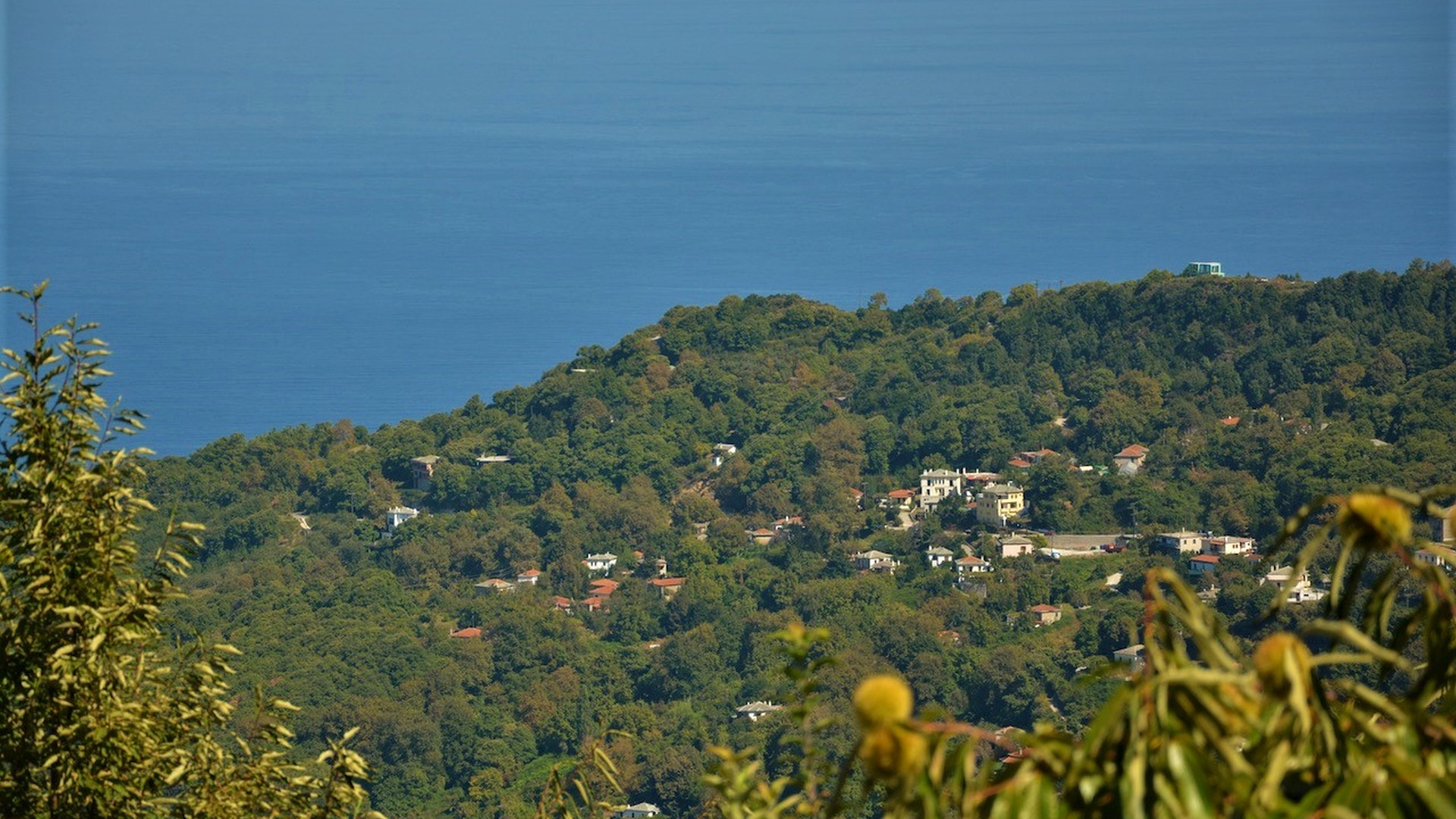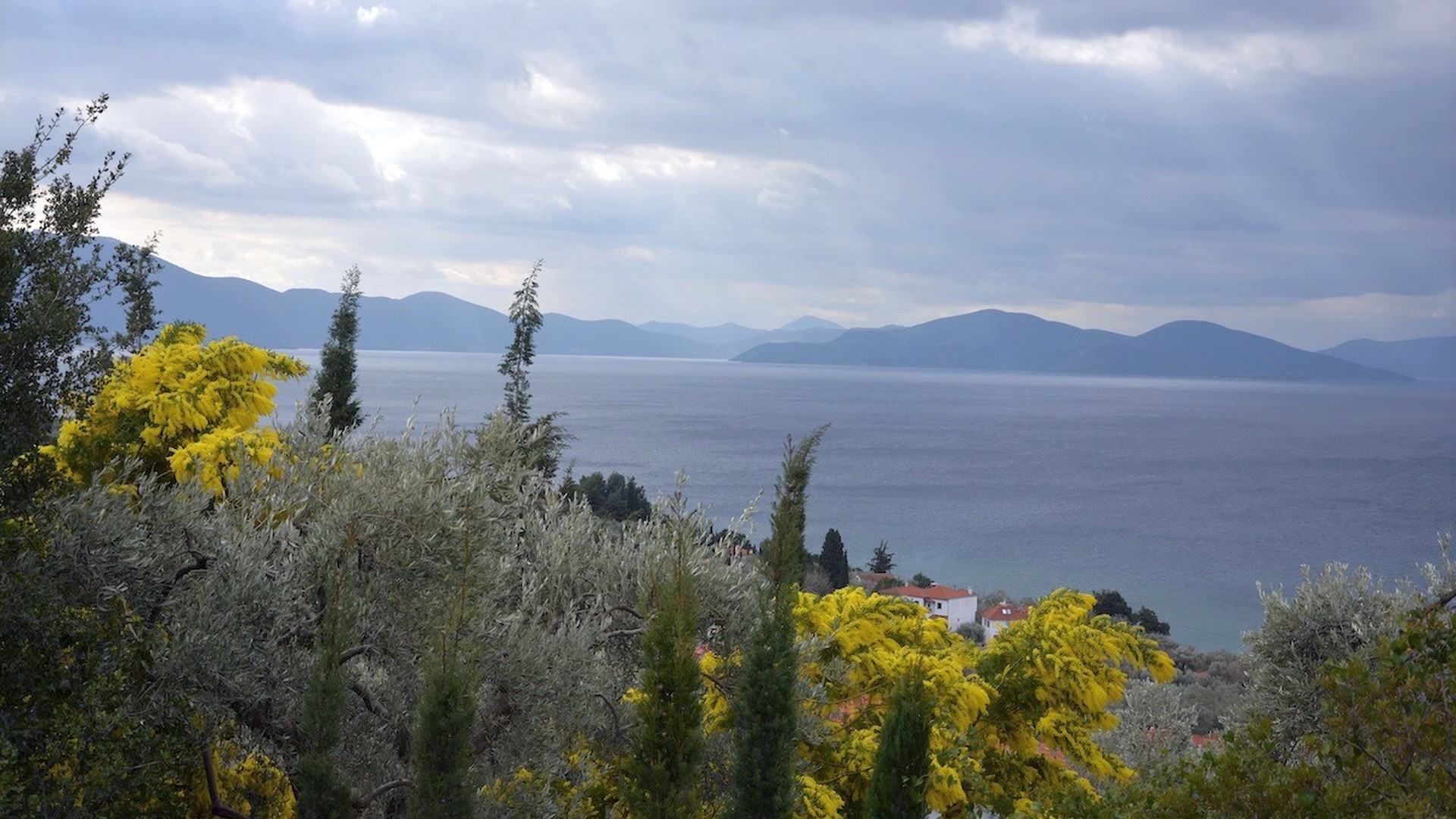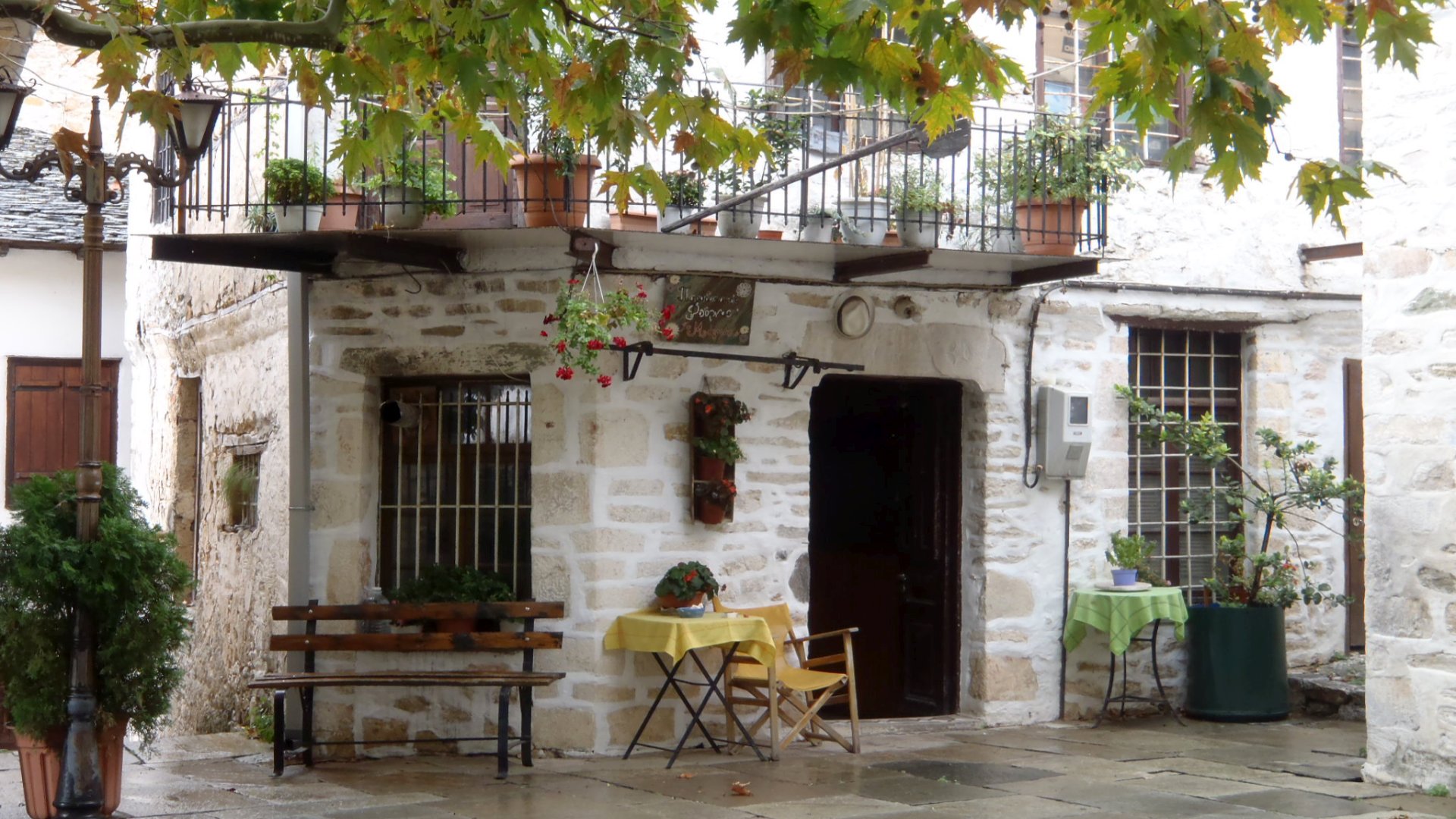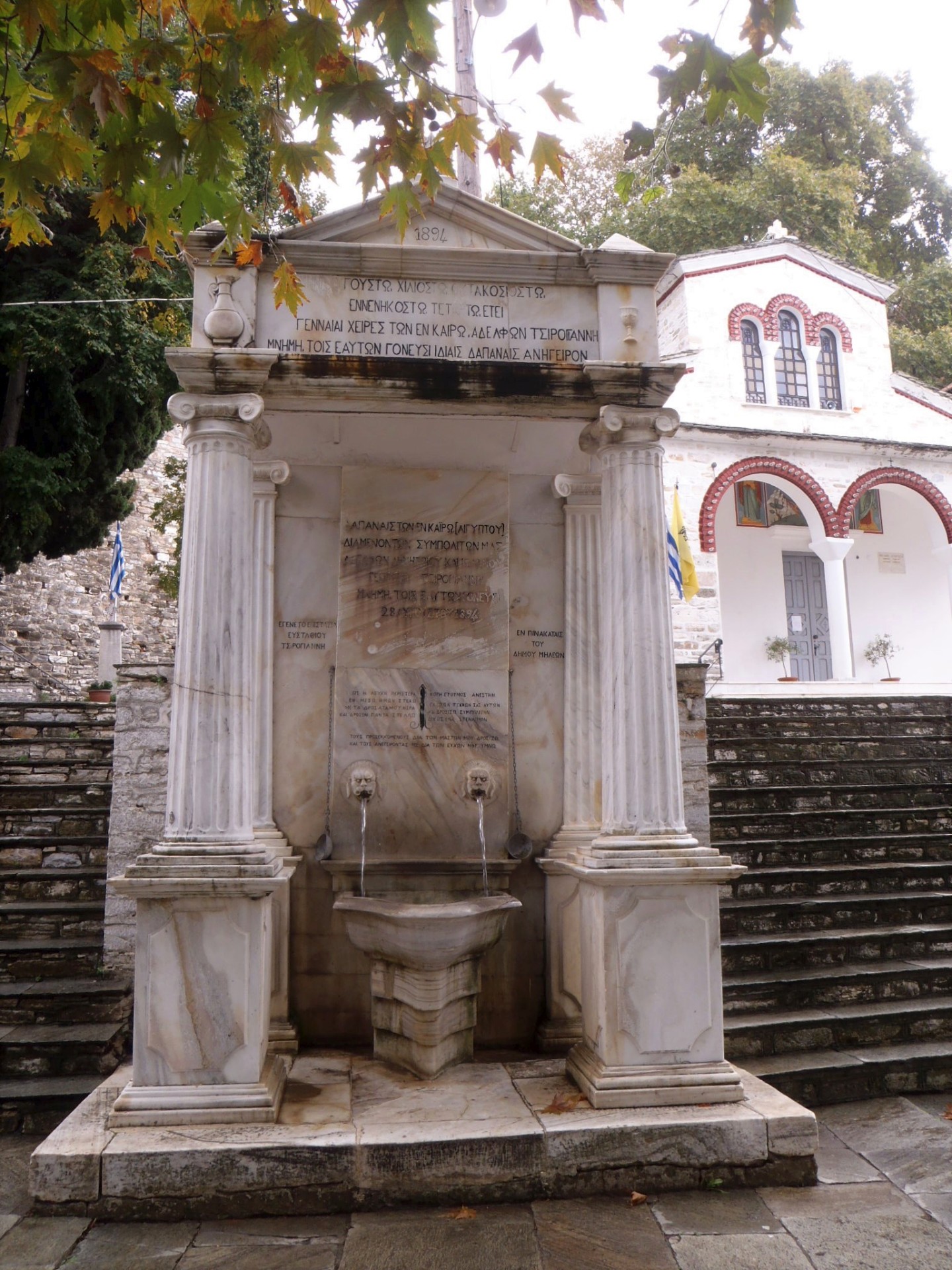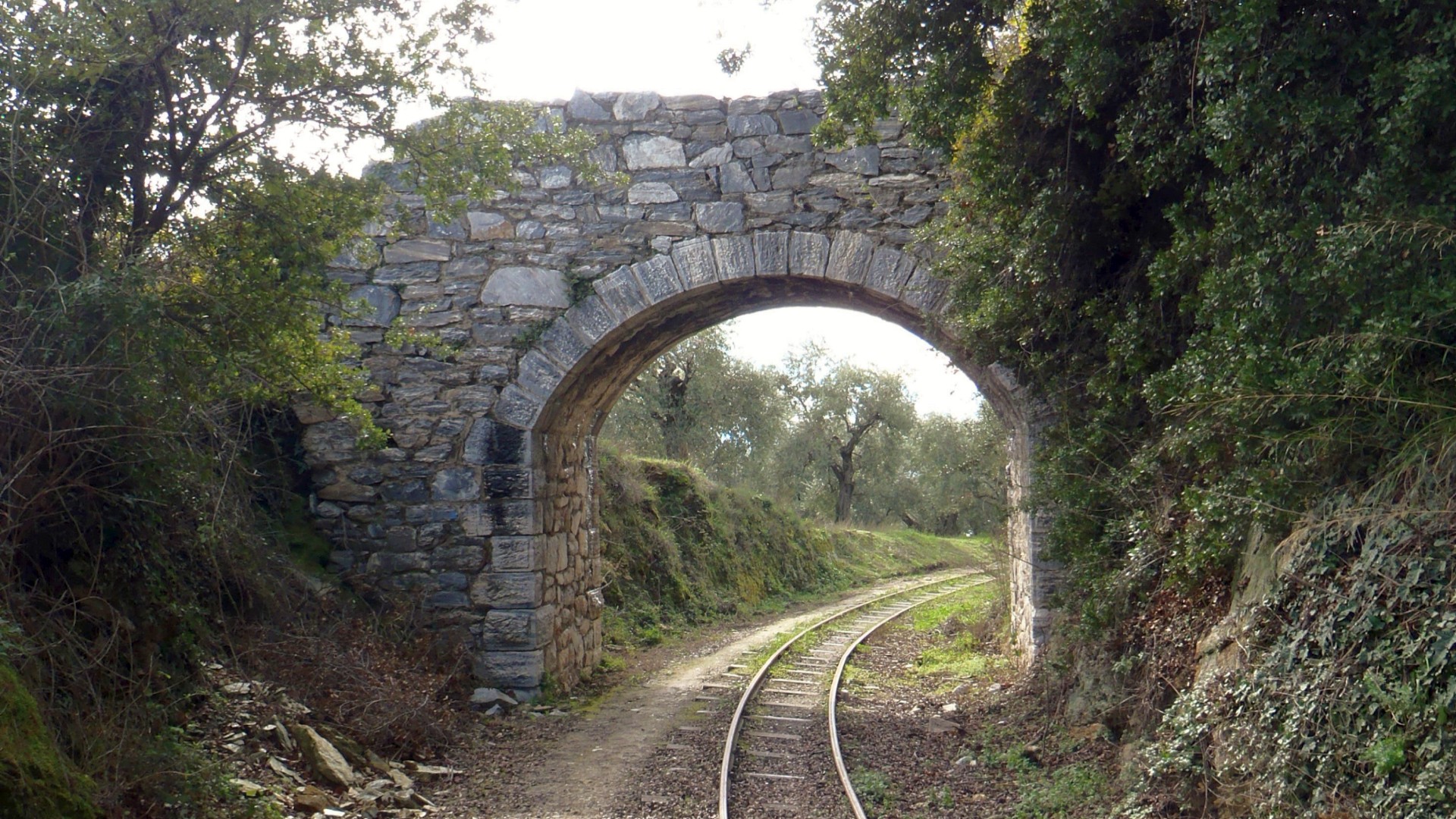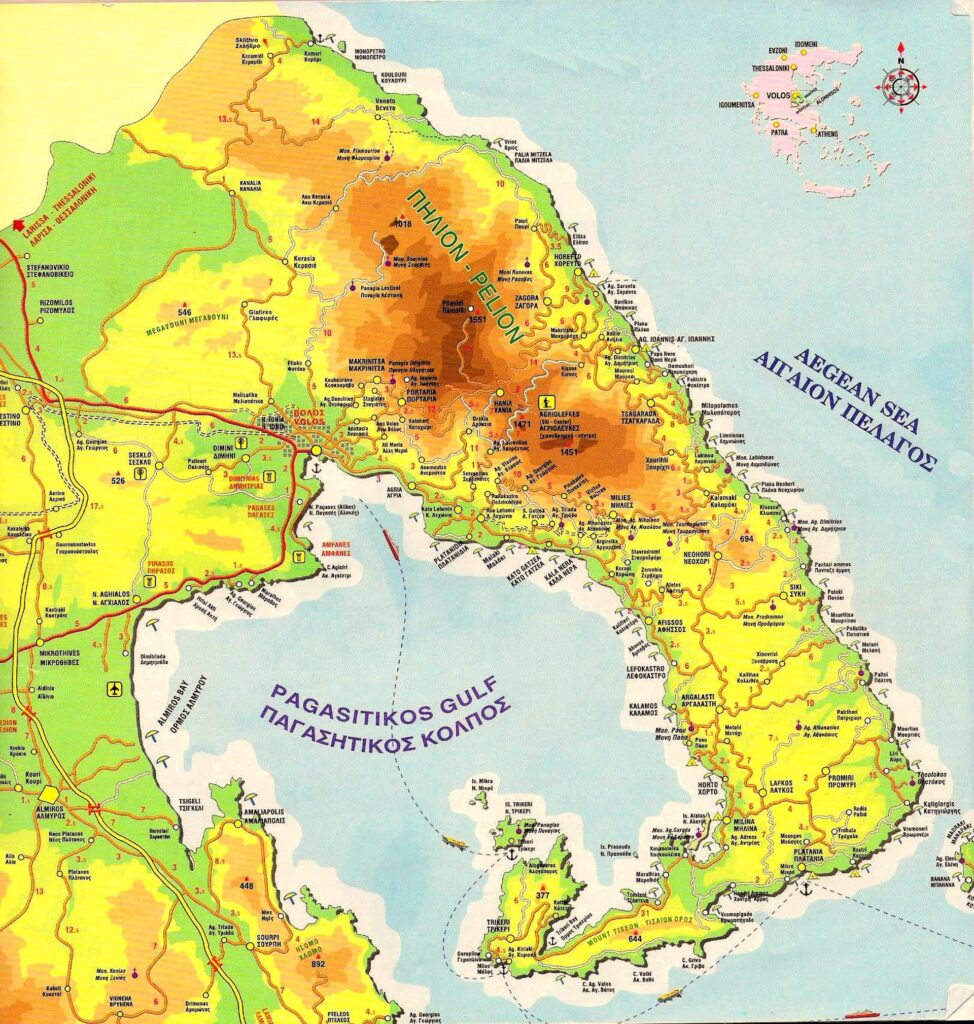
The peninsula of Pelion is a magical place.
It extends from northwest to southeast with a length of approximately 44 km. and width ranging from 10 km. in the south up to 25 km. to the north.
Its highest peak is the Purianos Stavros with a height of 1,624m, is located on the north side of the mountain and is not visitable due to the existence of military installations. Other peaks are Kotroni 1550m, Pliasidi 1547m, Aedonaki 1537m, Agriolefkes 1471m, Dramala 1455m, Schitzourauli 1450m, Golgothas 1415m.
The whole mountain is overgrown with forests with towering beech trees, oaks, plane trees, wild chestnut trees, forest pine, as well as clusters of hybrid fir. At the lower altitudes there are apple trees on the eastern slopes, with olives in the south as well as very dense macaque vegetation. Its hydrological nature is particularly characteristic as the eastern slopes receive very large amounts of rain and snow that far exceed the average value of lowland Thessaly.
Despite the presence of 70% of shale rocks that would not allow the creation of important underground sources, the existence of large cracks has led to the creation of remarkable water sources. The most important of these are those of Kaliakouda and Lagonika. In total the known springs on the mountain reach 70.
Rivers with steady flow do not exist in Pelion but large streams, such as that of Lagonika, Vrychon, Kaliakouda and Feluka with remarkable flow in the winter and spring months as well as dozens of small streams.
Pelion has rich vegetation all year round. Mainly grown apples, pears, peaches, lemons, almonds, chestnuts, walnuts, oil and olives, tea, thyme, while they are produced by small producers and cooperatives products such as spoon sweets, noodles, trahanas, tsipouro, honey and royal jelly.
Throughout the year, various festivals take place in Pelion, where the products are sold and there is a special celebration for each product, such as the celebration of chestnut every October in Xourihti and the feast of tsipouro in Muresi in November. In the villages of Pelion you will find many cooperatives, especially women’s agricultural cooperatives, which produce traditional homemade products.
Pelion has a large number of trails that are ideal for walking, equestrian and cycling tourism. The paths-calderimia, together with the over a 100 year old railway Volos – Milies, constituted until the 1950s the only axis of communication of the villages with each other and with Volos.
Despite the passage of time, many of the old trails are kept in very good condition thanks to the care of the local communities giving the visitor the opportunity to explore the mountain up close and safely.
Source: Wikipedia / Photos: Hike Away & ExpTrek

